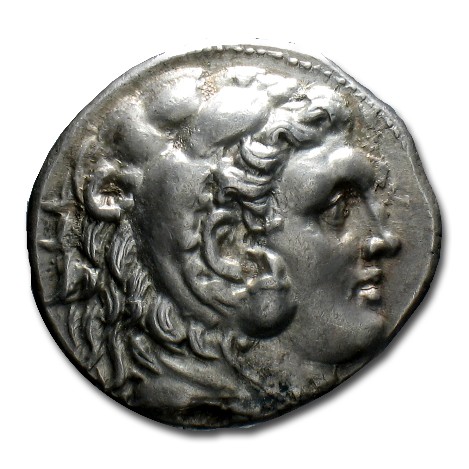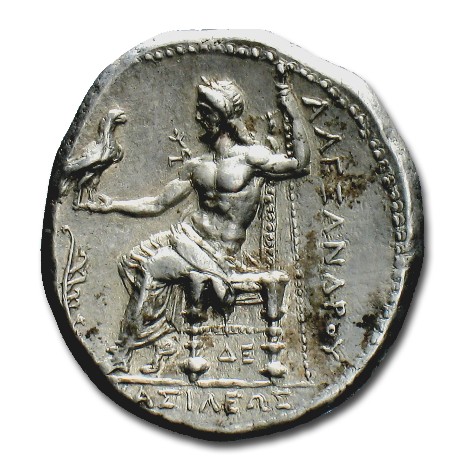The Tetradrachm of Alexander III the Great - Moruzzi Numismatica Roma
Main menu:
- An introduction to numismatics and collecting
- Abbreviations concerning coins
- Collecting ancient coins in Italy
- State of preservation of coins
- The rarity
- Numismatic bibliography
- False coins
- Plated coins
- The Roman woman in the portraits of the Augustae
- Roman tesserae with numerals and Spintriae
- The Ara Pacis
- The temple of Janus
- Domitianus
- A solidus of Jovinus
- International Coins
The Tetradrachm of Alexander III the Great


Alexander's silver
The enormous prestige of the Athenian coin led Philip II of Macedon - and also his son Alexander III better known with the epithet "The Great" - to adopt for their coinage not the Thessalian money foot, but the attic one, basing so the their coinage on a drachma weighing about 4.2 grams. We don't know when Alexander the Great began the production of his tetradrachms (maybe in the year when he arose to the throne in 336 B.C. or a few years later); instead, we know surely that a large quantity of exemplars was minted for almost a century after his death (occurred in 323 B.C.) in the several mints of his vast empire, extending from Balkans to the ancient Persia territories, to Pakistan and Egypt, reaching also the northern part of India, becoming so the currency of the Hellenistic world until the Roman conquest and beyond. Innovative from the iconographic point of view, the tetradrachm was characterized on the obverse by the powerful portrait of Alexander the Great, represented in the guise of Heracles wearing the Leontea, and on the reverse by the half-naked figure of Zeus Ammon sat on a throne, supporting the eagle on the outstretched right arm and vertically the sceptre on his left one. The name of the issuing authority, ALEXANDROU, represented also the money reliability guarantee for people who accepted it in trade. In addition, symbols and monogram letters on the reverse indicated the mint where money was coined. The diffusion area of the Macedonian coin included the same territories where previously circulated the Athenian "owl" - beyond Greece of course, Asia Minor, Syria and Sicily; as the archaeological discoveries testify, the coin circulated not only in the territories previously cited, but also in northern Balkans and in Gaul. It's so evident that the tetradrachms of Alexander the Great, even massively imitated, played a very important role in international currency, at least until the end of the fourth century B.C., when Egypt decided to reduce the weight of coins causing its withdrawal from circulation, as they became too heavy.
The perceived ideas of an individual are unique and a logical product of different and personal impressions. Although a great deal of intellectual comment is placed freely on the internet, it should not be forgotten that there are moral and legal obligations with respect to the plagiarising of text without the consent of the author. Copyright Moruzzi Numismatica © 1999-2016